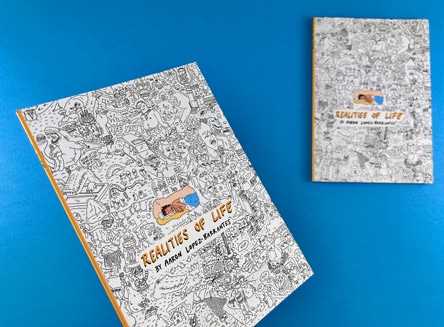Creating Your Illustrated Zine: Print Specs, Design Inspiration, and Paper Choices

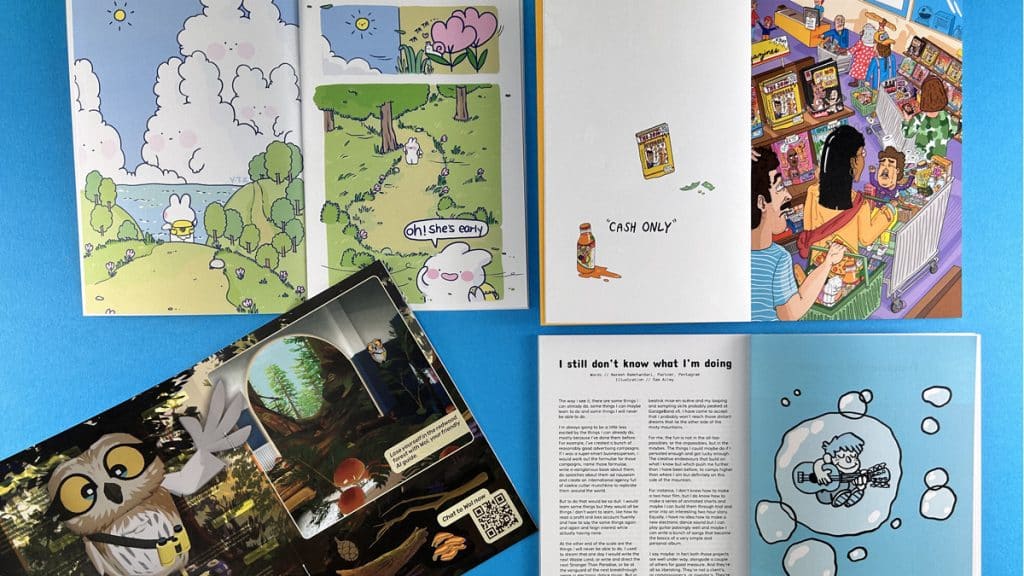
Introduction
In the world of self-publishing, zines have emerged as a powerful platform for illustrators to showcase their creativity. These small, self-made publications offer a unique canvas for visual storytelling, allowing artists to share their work in a tangible format that can be easily distributed and enjoyed. In this guide, we’ll explore the essential tools for zine publishing for illustrators, offering tips and insights to help you transform your artwork into print.
The Art of Illustrated Zines
Illustrated zines are a celebration of creativity, a testament to the power of visual narratives. They can range from simple sketchbooks to elaborate comic book printing uk, each one a unique expression of the artist’s vision. Whether you’re a seasoned illustrator or a budding artist exploring new mediums, creating a zine can be a rewarding and fulfilling experience.
Let’s take a closer look at some standout examples of illustrated zines that have caught our eye:
Swirl: A Zine with a Message
Swirl is a zine that uses illustrations to discuss mental health issues. The pages are filled with bright colours, adding an upbeat edge to the important content. The font is engaging and fun, and the typography helps guide the reader through the narrative. The cover features a matt lamination, giving it a professional finish.
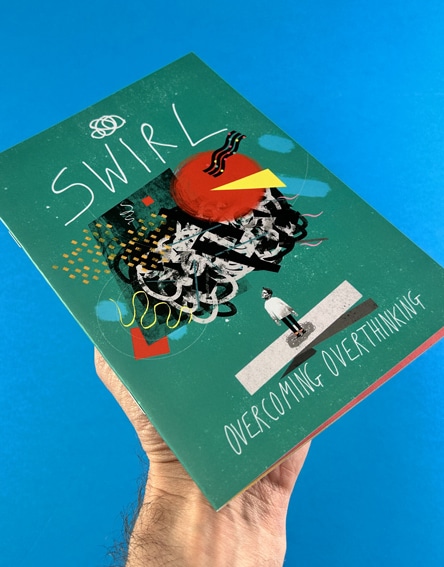
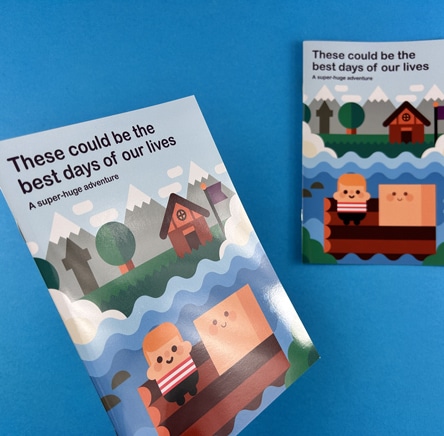
These Could Be The Best Days of Our Lives: A Children’s Zine
This children’s zine features stunning full-colour illustrations, charmingly arranged on the page with a little bit of text opposite to guide the reader through the narrative. The gloss laminated cover instantly draws the reader in, making it a perfect choice for this vibrant and playful publication.
Shell Suit Zombie: A Zine for Creatives
Shell Suit Zombie is a zine for the creative market, designed to help creatives decide what they’re going to do after they finish university. The zine features high-end illustrations on uncoated paper, which means the images sit flatter and softer on the matt surface. It’s A5 perfect bound, giving it a neat and professional appearance.
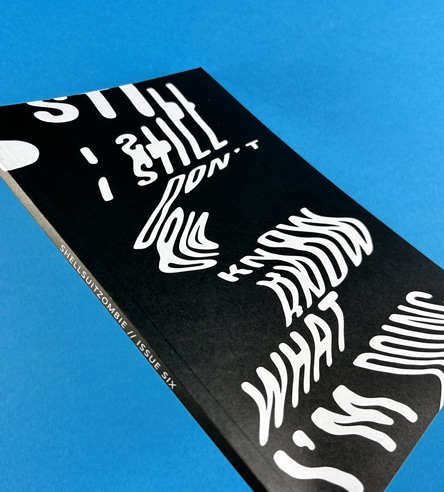
Essential Tools for Zine Publishing for Illustrators
Creating a zine involves more than just drawing beautiful illustrations. It requires careful planning, design, and production to ensure that your artwork is presented in the best possible way. Here are some essential tools and resources that can help you navigate the process of zine publishing:
Art Supplies
As an illustrator, your art supplies are your most important tools. Depending on your preferred illustration style, you might need a variety of pencils, pens, markers, paints, and brushes. You’ll also need high-quality paper that can handle your chosen medium. Increasingly we are starting to see people create unique illustrations using Canva directly onto their tablet. Export them as high res pdfs and we’ll be able to print them.
Design Software
Adobe Illustrator
Let’s dive into the world of Adobe Illustrator, a powerhouse of vector graphics software that’s got everything you need to create jaw-dropping designs, logos, icons, typography, and complex illustrations for any medium. It’s a part of the Adobe Creative Cloud, which means it plays nicely with all of Adobe’s other design tools, giving your creativity the freedom to soar!
With Illustrator, you’re stepping into a precision drawing environment that can scale your designs up to billboard size or down to mobile screen size, all while keeping your artwork as crisp and clear as the day you created it. It’s packed with a treasure trove of tools and features, including gradient effects, opacity controls, brushes, and drawing tools, that let you craft intricate vector artwork with a level of detail and control that’s simply unmatched.
But the fun doesn’t stop at your desktop! Adobe Illustrator also supports a mobile app, Illustrator on the iPad, giving you the flexibility to work your design magic from anywhere. And thanks to the cloud-based nature of the software, all your files, fonts, and assets are always right there when you need them, whether you’re working from your home office or on the go.
Plus, Adobe Illustrator isn’t just a tool, it’s a community. With a wealth of learning resources and a vibrant community of users, it’s a comprehensive platform that welcomes designers of all levels. So whether you’re a seasoned pro or just starting out, Illustrator has got your back.
Ready to start your Adobe Illustrator journey? Head on over to Adobe’s official Illustrator page and get ready to unleash your creativity. Happy designing!
Adobe InDesign
Adobe InDesign is a top-notch design tool in Adobe’s Creative Cloud suite. It’s perfect for creating eye-catching layouts for both print and digital media, from flyers to magazines. With precise typography control and integrated creative tools, InDesign makes design, preflighting, and publishing a breeze. Plus, it syncs beautifully with Adobe Illustrator, Photoshop, and Acrobat. Fancy working on the go? The InDesign mobile app has got you covered. It’s a must-have for design pros, making layout design and publishing a piece of cake.
Best alternatives to Adobe Creative Suite
Hey there, creative superstar! Are you on the hunt for some alternatives to Adobe’s suite of design tools? We get it, Adobe’s software is top-notch, but it might not always fit into everyone’s budget or specific needs. So, let’s dive into some fantastic alternatives that can help you create stunning designs without breaking the bank.
First up, let’s talk about Photoshop alternatives. Have you heard of Affinity Photo? It’s a brilliant tool that offers high-end photo editing capabilities, and it’s a one-time purchase, which means no monthly subscription fees. It’s a win-win!
Next, if you’re looking for an Illustrator alternative, Sketch is your go-to. It’s a vector-based design tool that’s perfect for UI and UX design. Plus, it’s user-friendly and comes with a collaborative platform for teams.
Now, if you’re into layout design, you might be using Adobe InDesign. But guess what? Affinity Publisher, Quark Express and Canva can be great alternatives. They are design tool that are super easy to use and offer most of the capabilities of InDesign. And the best part? Some are even free to use, with premium elements available for a small fee.
So, there you have it, folks! These are just a few alternatives to Adobe’s suite of design tools. Remember, the best tool is the one that fits your needs and budget. So, don’t be afraid to explore and try out different options. Happy designing!
Scanner or Digital Camera
If you’re creating your illustrations by hand, you’ll need a scanner or a digital camera to digitise your artwork. Make sure to use a high-resolution setting to capture all the details of your illustrations. There are options available for all budget levels but a £50-100 from Argos or Amazon would be plenty good enough to scan A4 artwork at 300dpi then save it to your computer for editing.
Online Platforms
Online platforms like Etsy, Big Cartel, and Not On The High Street can be useful tools for selling and distributing your zines. They allow you to reach a global audience and handle transactions securely.
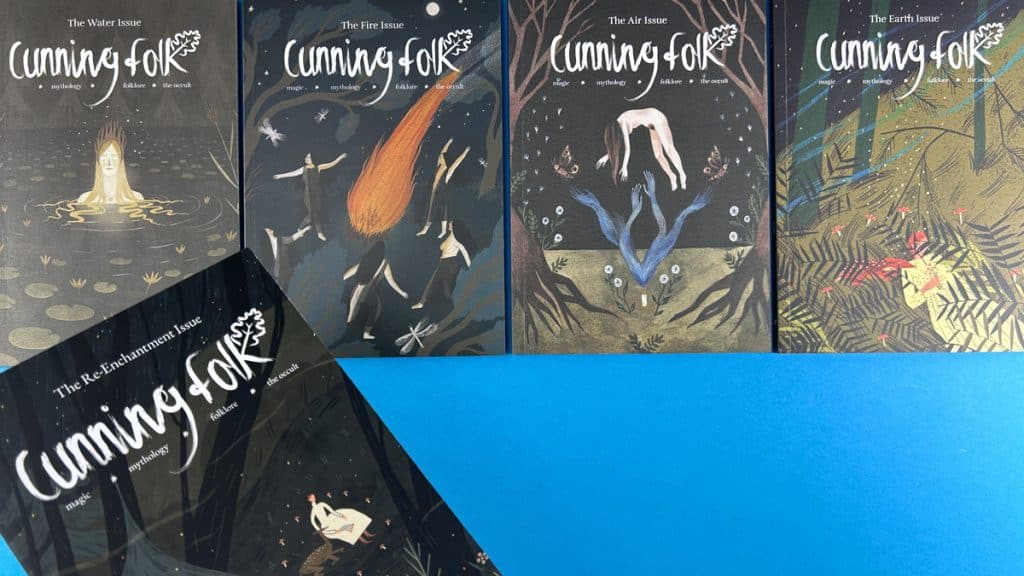
From Art to Print: Showcasing Illustrated Zines
Creating a zine is a journey from art to print, a process that requires careful planning and execution. Here are some steps to guide you through this process:
Step 1: Plan Your Zine
Before you start drawing, take some time to plan your zine. Decide on the theme, format, and layout. Sketch out a rough idea of each page to guide your illustrations.
Step 2: Create Your Artwork
Now it’s time to create your illustrations. Remember, your zine is a reflection of your unique style and vision, so don’t be afraid to experiment and push your creative boundaries.
Step 3: Scan or Photograph Your Artwork
Once your illustrations are complete, you’ll need to digitise them. Use a scanner or a digital camera to capture high-resolution images of your artwork.
Step 4: Layout Your Zine
Using design software, arrange your scanned illustrations on the page. Add text if necessary, and play around with the layout until you’re happy with the look of your zine.
Step 5: Print and Bind Your Zine
Finally, print your zine using a high-quality printer. Choose a binding method that suits your zine’s style and format. You can do this at home, or use a professional zine printing service like Ex Why Zed for a high-quality finish.
Zine Layout and Design Tips for Illustrators: Maximising Visual Impact
The layout and design of your zine can greatly enhance the visual impact of your illustrations. Here are some tips to help you create a visually captivating zine:
Use a Consistent Style
Consistency is key in zine design. Whether it’s your illustration style, colour palette, or typography, maintaining a consistent style throughout your zine can create a cohesive and professional look.
Balance Your Layout
Balance your layout by evenly distributing elements on the page. This doesn’t necessarily mean that everything has to be symmetrical – it’s more about creating a sense of harmony and stability in your design.
Use White Space Effectively
Don’t be afraid to leave some areas of your page empty. White space can help to highlight your illustrations and make your zine more readable.
Choose the Right Paper
The paper you choose for your zine can greatly affect the look and feel of your illustrations. Uncoated paper can soften the lines and colours of your illustrations, making it a great choice for pencil or crayon drawings. For sharp, crisp illustrations, a silk finish might be the winning choice. If your zine is a graphic novel with dynamic characters, a gloss finish might give them the punch you’re looking for.
DIY Printing Methods for Zine Publishing: Options and Considerations
When it comes to printing your zine, you have several options. You can print at home using a high-quality printer, or you can use a professional printing service like Ex Why Zed. Each option has its pros and cons, and the best choice depends on your specific needs and resources.
Printing at home gives you full control over the printing process, and it can be a cost-effective option if you’re making a small number of zines. However, it can be time-consuming, and the print quality may not be as high as with professional printing.
Professional printing services can provide high-quality prints and a variety of binding styles which you can check out at our Styling hub. They can also handle large print runs, making them a good choice if you plan to distribute your zine widely. However, they can be more expensive than printing at home, and you’ll need to factor in the time it takes to ship your zines.
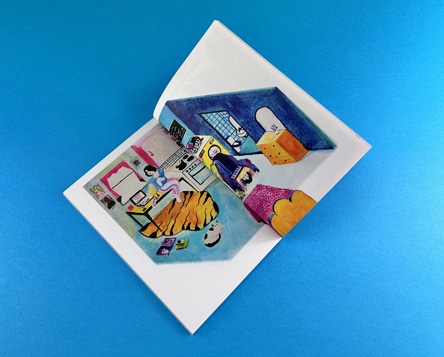
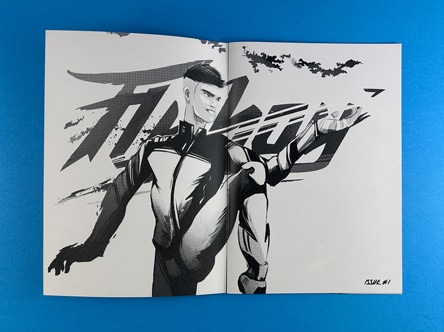
Collaborative Zine Projects: Inspiring Connections for Illustrators
Collaborating on a zine project can be a rewarding experience, offering opportunities to learn from other artists, gain new perspectives, and create something truly unique. Collaborative zines often feature work from multiple illustrators, each contributing their own style and vision to the project. This can result in a diverse and engaging publication that showcases a range of artistic talents.
FAQs
How do you make a zine in Illustrator?
Adobe Illustrator is a powerful tool for creating zines. Start by setting up your document with the correct page size and number of pages. Then, use the drawing tools to create your illustrations, and the text tools to add any written content. Once your design is complete, you can export it as a PDF for printing.
Do You Know Any Good Illustrators Who Can Design it for me?
Take a read of our blogs on finding a good illustrator on PeoplePerHour or finding a good designer on Fiverrr.
We have even crafted a design brief you can just copy and paste directly to the designers you like, which will get the ball rolling.
How do I publish an art zine?
Publishing an art zine involves several steps. First, create your artwork and layout your zine using design software. Next, print your zine, either at home or using a professional printing service. Finally, distribute your zine, either by selling it online, at zine fairs, or in local bookstores and art shops.
What software do you use for zine?
There are several software options for creating zines, including Adobe Illustrator, InDesign, and Photoshop. These programs offer a range of tools for drawing, layout, and text editing, making them ideal for zine creation.
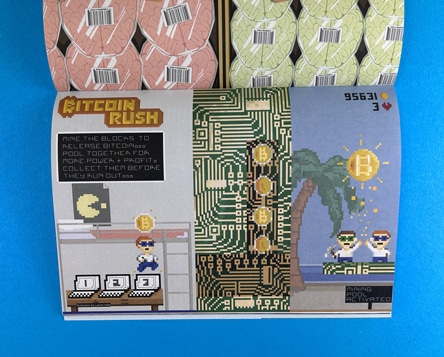
What supplies do you need to make a zine?
The supplies you need to make a zine depend on your chosen method of creation and printing. At a minimum, you’ll need art supplies or a digital drawing tool, design software, a printer, and paper. If you’re binding your zine at home, you’ll also need a stapler or glue.
Do zines make money?
While some zine creators do make money from their publications, many zines are not created with profit in mind. Instead, they are often a labour of love, a way for artists to share their work and connect with a community of like-minded individuals.
How much should I charge for my zine?
The price of your zine should reflect the cost of materials, printing, and your time. However, it’s also important to consider what your audience is willing to pay. Research other zines in your genre or style to get an idea of typical pricing.
Conclusion
Zine publishing offers a unique platform for illustrators to showcase their artwork and connect with a community of readers and fellow artists. With the right tools and resources, you can transform your illustrations into a tangible publication that reflects your unique style and vision. So why wait? Start your zine publishing journey today and let your creativity take flight!
